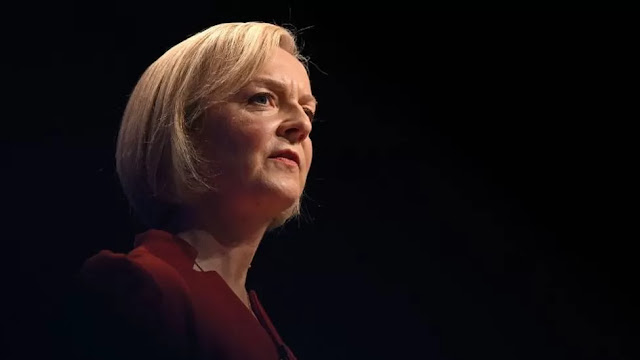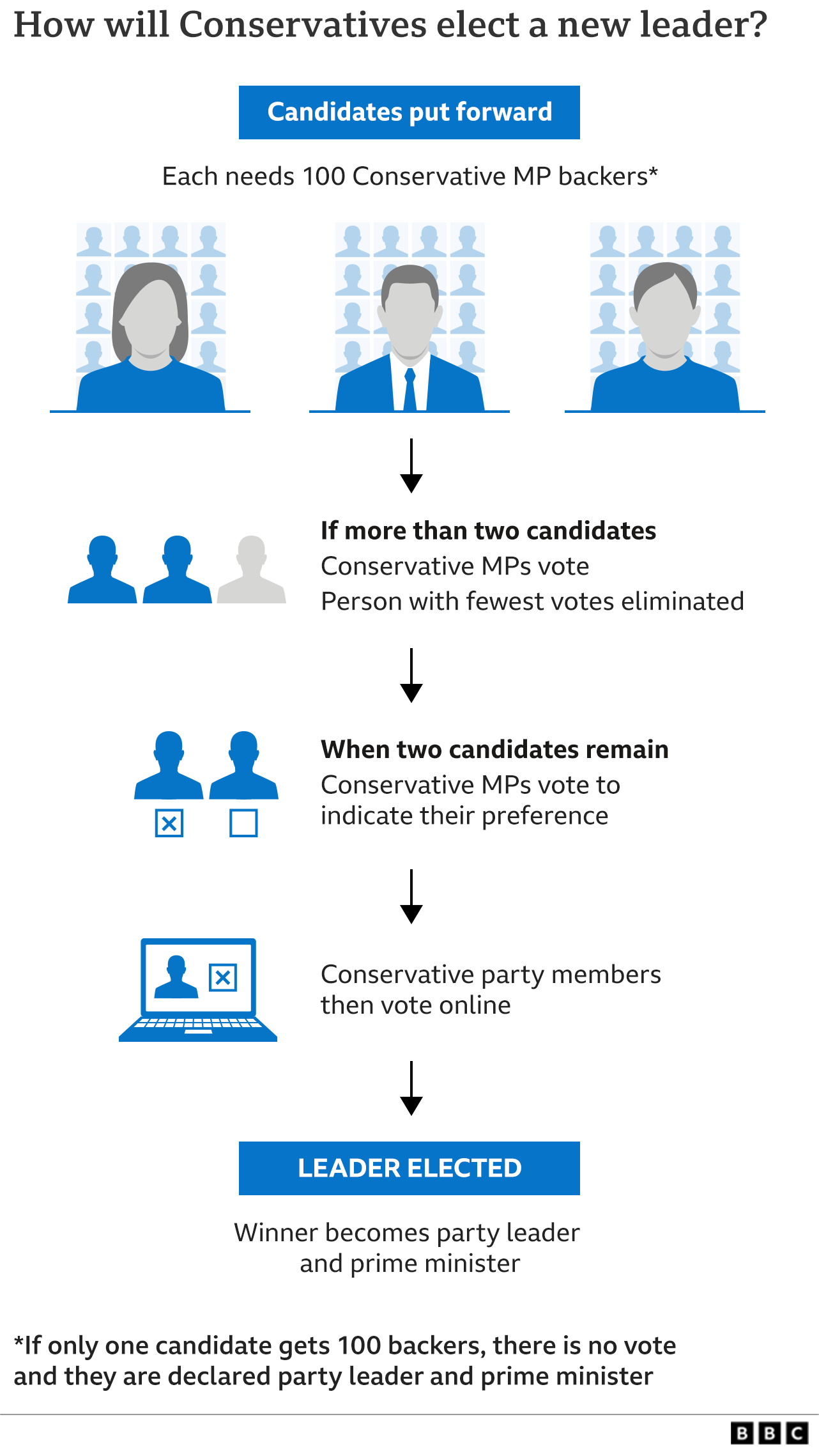BBC News 20 October 2022
The search for a new Conservative Party leader is under way, following the resignation of Liz Truss as prime minister.
How will the Conservatives elect a new leader?
Nominations to succeed Ms Truss as the next Conservative Party leader and PM are now open and will close at 1400 BST on Monday 24 October.
To enter the contest, candidates will require at least 100 nominations from Conservative MPs.
This is considerably higher than the last contest, where only 20 nominations were needed.
As there are currently 357 Tory MPs, a maximum of three candidates will be able to progress.
If only one person reaches the 100 threshold on Monday they will become the next leader, and thus the new prime minister, without the contest going to the next stage.
If there is more than one candidate with enough nominations, there will be a ballot of Conservative MPs between 1530 BST and 1730 BST on Monday.
In the event that there are two candidates in that ballot, it will be indicative (ie showing levels of support among MPs).
If there are three candidates, the one with the fewest number of votes will be eliminated with the result announced at 1800 BST. There would then be an indicative vote between 1830 and 2030 BST the same day with the result announced at 2100 BST.
If there are two candidates at the end of the ballots, ie no-one withdraws after the indicative vote, party members will take part in an online vote to decide the winner.
Before the vote among party members closes, it is hoped the two candidates will take part in a television debate.
The winner will be declared by Friday 28 October.
Will party members definitely be involved?
Removing party members from the voting process would probably have required a change to the Conservative Party's constitution.
But the rule requiring a vote of members only applies if there are two remaining candidates. When Theresa May became leader in 2016 her opponent Andrea Leadsom dropped out. This meant Mrs May became party leader without a vote being put to members.
So even if two candidates emerge in this contest, it's possible the members won't get the final say.
How is the next prime minister appointed?
Whoever wins the contest to lead the Conservatives will become the leader of the party with the largest number of MPs in Parliament.
The King will therefore ask them to form a government, becoming the UK's next prime minister in the process.
How was Ms Truss chosen?
The summer leadership contest, which Ms Truss won, was held over a much longer period of three months.
Candidates were only able to enter the race if they had the backing of at least 20 Tory MPs.
Eight contenders emerged - including Ms Truss.
In the contest's first stage, Tory MPs chose two candidates to go forward to a vote of the wider membership of the party.
To do this, the Tory party's 358 MPs whittled down the field with a series of votes.
Anyone who received less than 30 votes or came last in each round was eliminated. The process continued until the two final candidates - Ms Truss and former chancellor Rishi Sunak - remained.
In stage two, Conservative Party members chose the winner in a postal and online vote lasting several weeks.
When the result was announced on 5 September, Ms Truss won 81,326 votes among party members, compared with 60,399 for Mr Sunak.
Will there be a general election?
There isn't automatically a general election when a new PM is appointed.
If the new PM decides not to call an early election, the next one does not have to be held until January 2025 at the latest.

